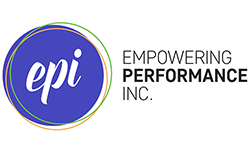Learning Has Curves...And a Beat
I’ve always wanted to learn to play the drums. Luckily, I found the perfect opportunity to get myself a bodhrán during our recent vacation back to Ireland. And, as so often happens, one of my life experiences has dovetailed perfectly with my commitment to learning and development. I wanted to get myself a bodhrán while we were there, so we stopped by the Siopa Ceoil An Daingin (Dingle Music & Coffee Shop).
The proprietor quickly and warmly drew us into conversation, listening with obvious curiosity and appreciation. Once he discovered my interest in the bodhrán, he insisted we make music. He gave me a drum and sat my daughter at the piano, and then he joined in with an accordion. We weren't ready to start touring as a musical group by any means, but by the end of our time together we all had big smiles on our faces. I was thrilled with my first bodhrán lesson! And we had already hit two tenets of effective learning:
Make learning fun by engaging learners immediately
Encourage learners to leave their comfort zones
Since coming home, I’ve continued to practice my new drum, and I’m benefiting from having recently read the book Make It Stick: The Science of Successful Learning. Make It Stick discusses several concepts of effective learning, but the one that really hits the mark for me right now is:
Interleaving
Scientific American describes the idea of interleaving as “studying related skills or concepts in parallel,” in contrast to the traditional method of “block learning.” We’re all used to block learning, practicing one concept until it’s mastered before moving on to the next. I’m extremely familiar with block learning as it applies to learning a musical instrument ꟷ as is any piano student who has practiced endless scales before graduating to chords. And any would-be basketball player who has attempted free throw after free throw after free throw knows block learning all too well.
Interleaving for piano practice could mean going from chords to scales to arpeggios and back again at random. With my new drum, it might mean alternating between basic strokes and Kerry style rolls. This method makes every practice different, so we can’t rely on rote learning or muscle memory as much.
Interleaving weaves both old (learned) and new (not yet learned) problems together, continually engaging our brains in searching for fresh solutions.
We must "reload" learning from our memory for each practice or problem. This improves our critical thinking and strengthens memory association. It also provides better transfer of learning across unfamiliar situations, which is what true learning is all about. And it’s a concept that is proving itself across multiple disciplines, including art history and math.
Block learning often feels better. We might cram for a test in one sitting by studying blocks of Subject A. Then Subject B, C, and so on. And we believe we know the material, which a good test grade then reinforces. But a few months later, not so much.
Even though it feels harder because it’s more gradual and requires more planning, interleaving results in learning that lasts longer.
Which means I could be the bodhrán queen of the senior center someday. Drumroll, please!
Michelle Kelly, CEO (Chief Enjoyment Officer)


